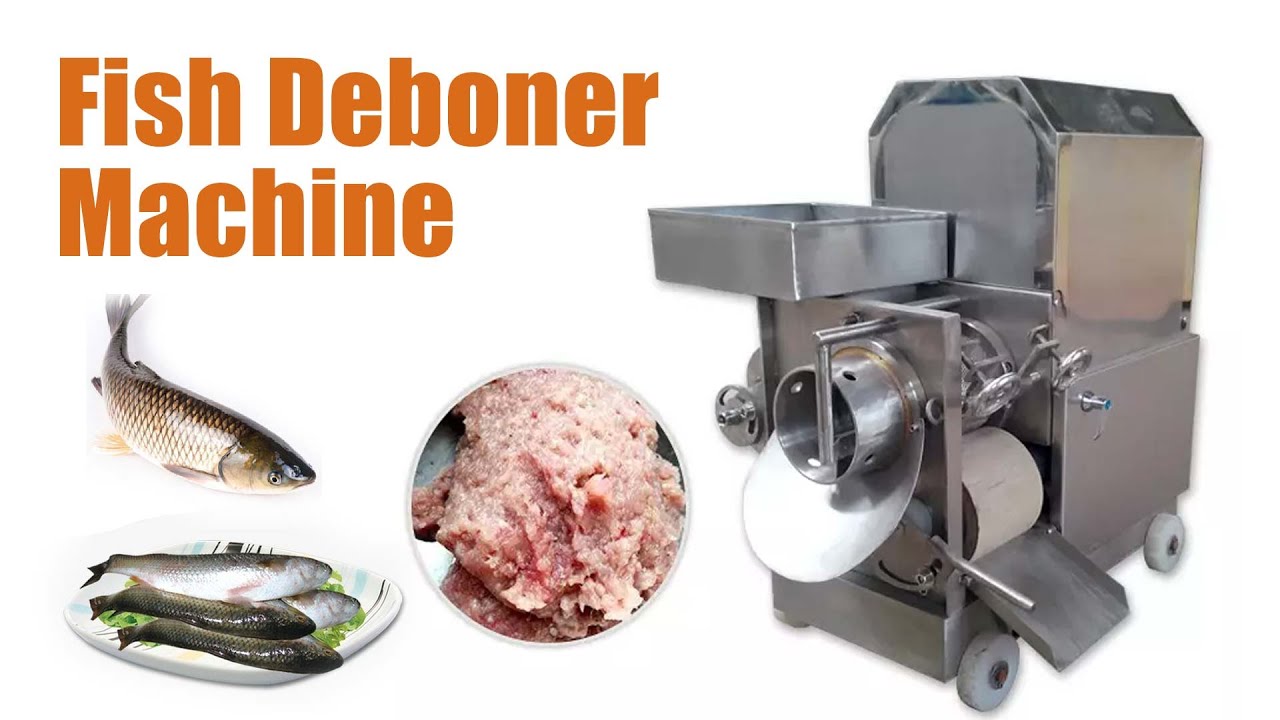10 years of experience as a food machinery equipment manufacturer
10 years of experience as a food machinery equipment manufacturer
The fisheries and aquaculture sector plays a vital role in the Lao People’s Democratic Republic, contributing significantly to food security, livelihoods, and the national economy. Freshwater fish, in particular, is a staple in the Laotian diet and a key source of protein for many communities. As the demand for fish and fish-based products continues to grow, both domestically and potentially for export, the efficiency of processing becomes increasingly important. One technology that stands to make a considerable impact in this area is the fish meat separator.

A fish meat separator, also commonly known as a fish deboner or fish meat-bone separator, is a specialized piece of food processing equipment designed to efficiently separate fish flesh from bones, skin, and fins. The fundamental principle of operation usually involves feeding headed and gutted fish (or fish pieces) into the machine. Inside, a combination of pressure and mechanical action, often involving a perforated drum and a flexible belt, squeezes the soft flesh through small holes while the harder bones and skin are retained and expelled separately. This process yields minced fish meat, often referred to as surimi if further processed, which is virtually free of bones and skin.
The efficiency of these machines can significantly reduce manual labor traditionally involved in deboning fish, a task that is not only time-consuming and tedious but can also lead to inconsistent results and lower yields. Modern fish meat separators are typically constructed from food-grade stainless steel, ensuring hygiene and ease of cleaning, which are critical aspects of food processing.
The introduction and wider adoption of fish meat separation technology in Laos could offer a multitude of advantages across the value chain, from small-scale processors to larger enterprises.
While the benefits are clear, successful adoption of fish meat separators in Laos would require certain considerations. The initial investment in machinery can be a factor for small-scale operators, although various sizes and capacities of machines are available to suit different scales of operation. Access to training on proper operation, cleaning, and maintenance is also essential to ensure the longevity of the equipment and the quality of the processed fish. Furthermore, a reliable supply of appropriately prepared raw fish (headed and gutted) is needed for optimal machine performance.
The type of fish being processed also matters. While many separators are versatile, some are better suited for specific fish types or sizes. Local species common in Laotian aquaculture and capture fisheries, such as tilapia, carp, and catfish, are generally well-suited for processing with standard fish meat separators.
The strategic integration of technologies like fish meat separators aligns with broader goals of sustainable development within the Laotian agri-food sector. By improving the efficiency of resource utilization, reducing post-harvest losses, and enabling the creation of higher-value products, this technology can contribute to:
Moreover, the use of fish mince can also encourage the utilization of smaller fish or species that are difficult to debone manually, thereby making better use of the available aquatic resources. This efficient utilization is key to the long-term sustainability of the fisheries sector.
The fish meat separator represents a significant technological advancement with considerable potential to modernize and enhance the fish processing industry in Laos. Its ability to increase yield, improve efficiency, ensure consistent quality, and facilitate product diversification makes it a valuable tool for businesses looking to grow and for the nation aiming to strengthen its food security and fisheries economy. As Laos continues to develop its aquaculture and fisheries sectors, the adoption of such appropriate technologies will be instrumental in maximizing the value derived from its aquatic resources, benefiting both producers and consumers alike. The careful consideration of machine suitability, coupled with adequate training and support, can pave the way for a more productive and innovative fish processing landscape in the country.
